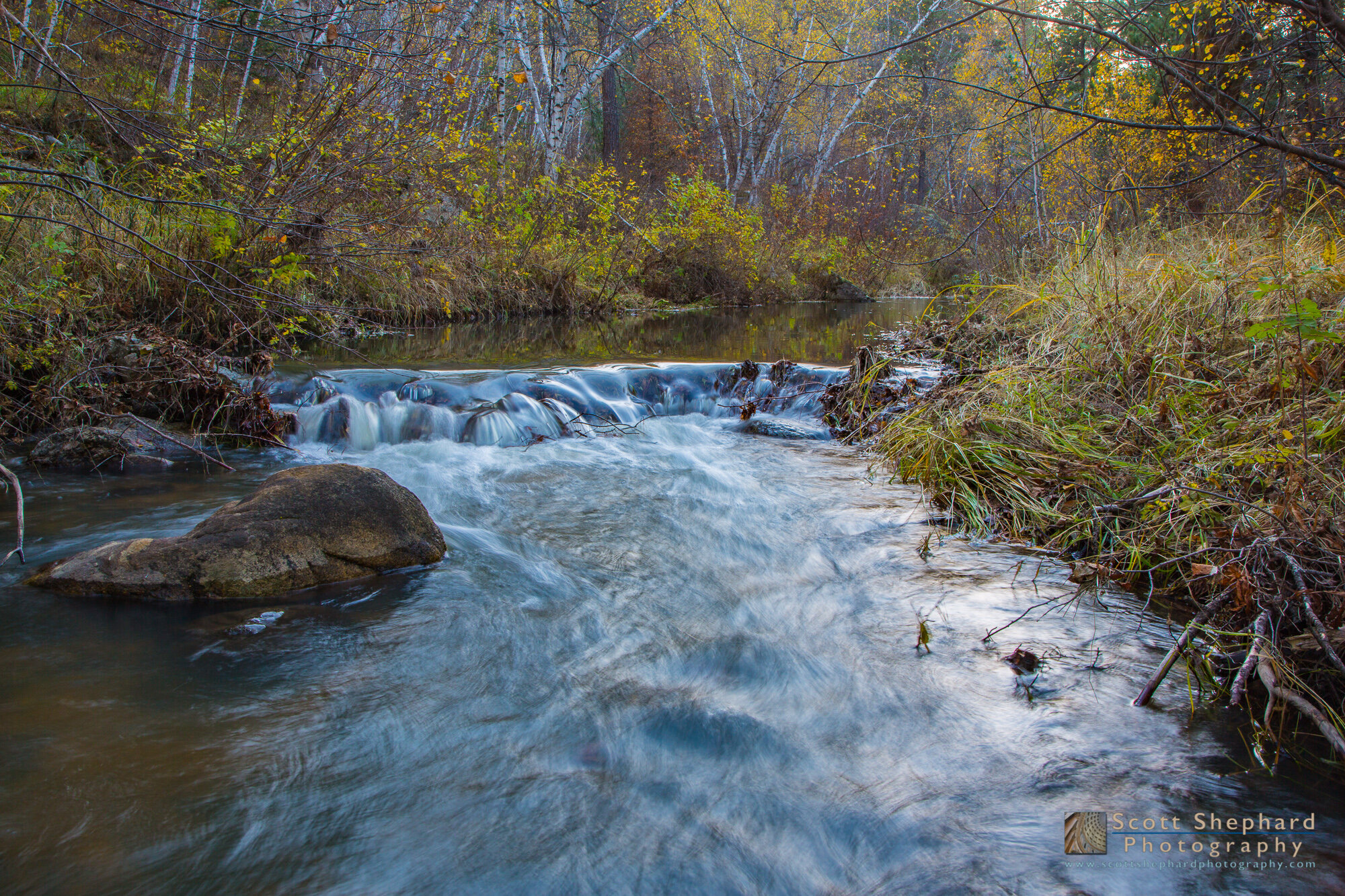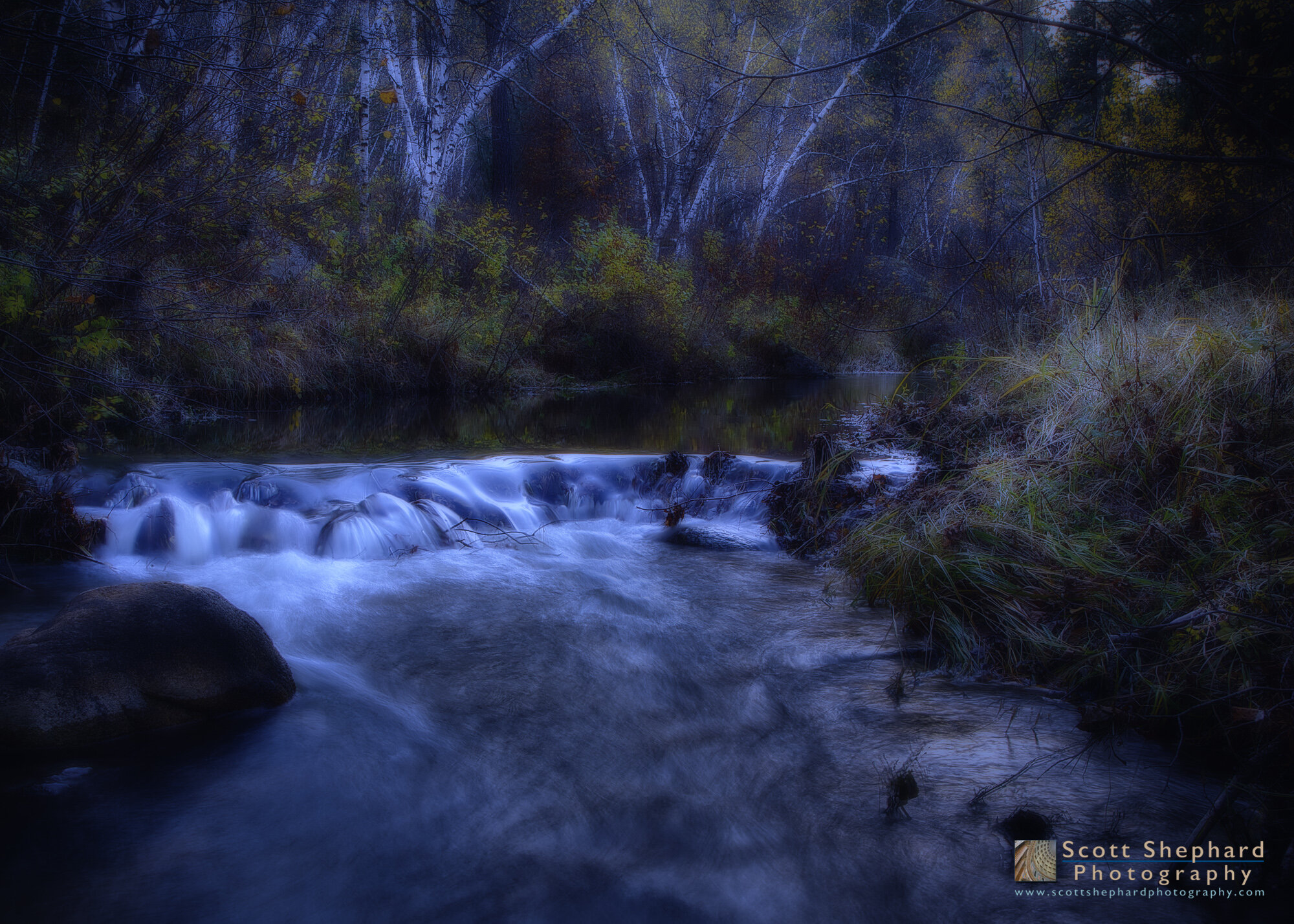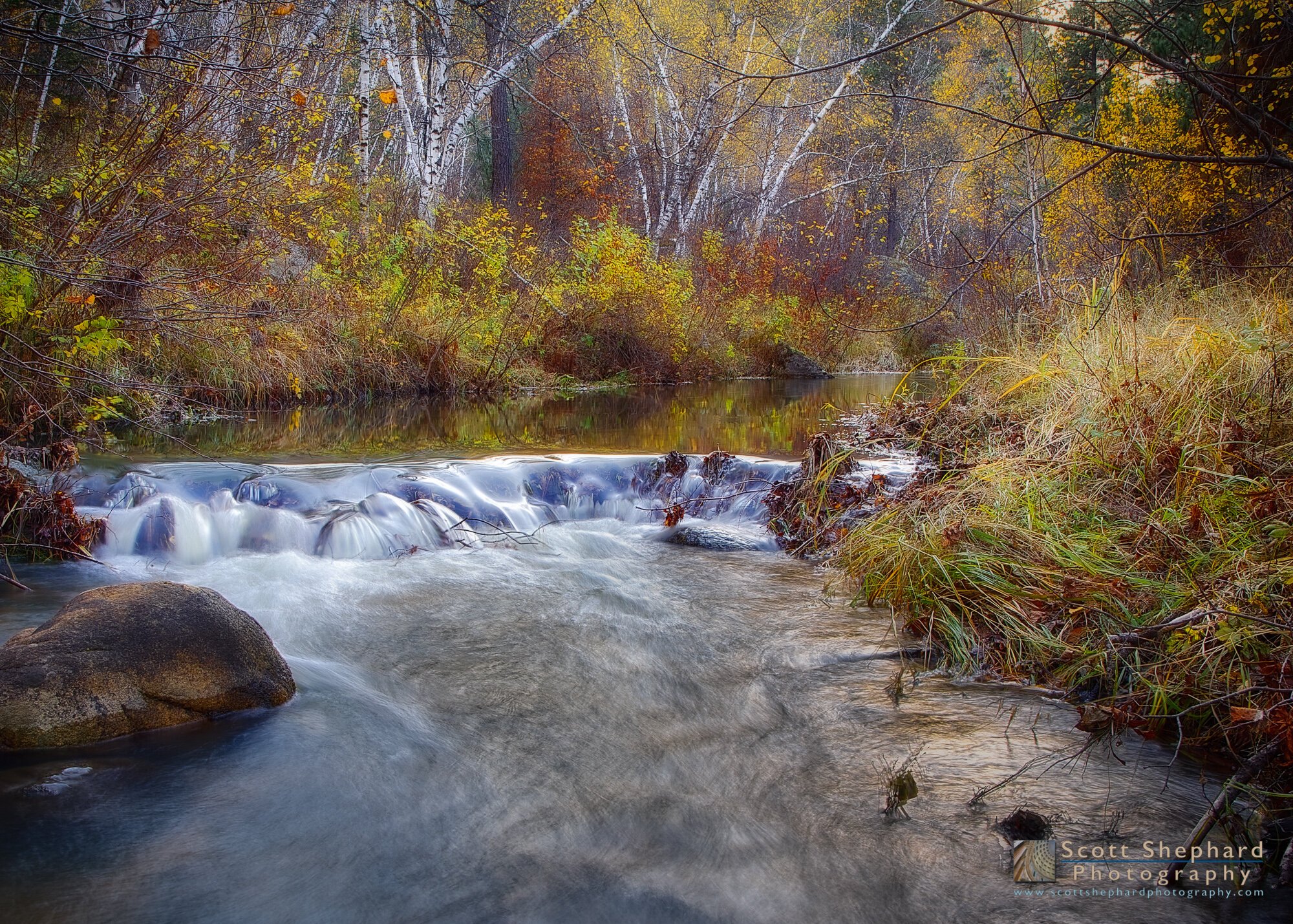By Scott Shephard
Iron Creek - Black Hills, SD
Yes, I repeat myself. Those who know my photography know that I return again and again to Iron Creek in the Black Hills. I think I’ve explained that this fetish/passion of mine is less about photography than about “being there.” But in defense of redundancy, I’ll say that while this is the same stream I’ve pictured countless times, it’s a different location that I had never photographed before.
Strangely, the most memorable part my photo experience on this occasion was that when I was leaving, my new $450 electronic flash (case and all) fell out of my camera bag and floated downstream. By the time I rescued it, it was sinking. Water poured out of the case when I opened it and I could see that the LED screen on the back side of the flash was filled with water. This experience leads to an old philosophic question: If a photographer swears in the forest and there’s no one there to hear him, does he make a sound? The good news was that I let the flash dry for a week and when I put batteries back in, it came back to life.
That’s all I have to say about the “capturing” of this photo. But, as I said I would do periodically, I’d like to talk a bit about how I “made” this photo. First, I need to say that everything you see in today’s photo is real. I am not talented enough to add and subtract things from a photo, like a watercolor artist might do with a brush. I’m not a painter. So, again, this is real. But here’s what the camera saw on October 8, 2014 at 5:16 PM:
Yes, “Holy cow!” There is a big difference between this and the featured photo. But both photos are real. The fact is that when you take a photo late in the day in mid October along a creek in the forest, even an expensive camera like the one I was using, won’t do so well. Photography is about light and the only good light is what we see reflecting off of the water in the foreground.
But, with a minor adjustment in the digital darkroom (aka Adobe Lightroom), here’s what we have:
It’s better but it’s still a little bland. The blandness is caused by lack of two things. One is called saturation, which is how much color is visible and the other is contrast, which is the difference between light and dark areas of a photo. So with a few minor adjustments in Lightroom, here’s the new result:
Now we’re getting somewhere. But a third element in a photo is something called “white balance.” All white light sources have different colors to which the human eye tends to adjust. You may notice, however, that at sunrise and sunset, that sunlight is warm (yellow/organge). But before and after sunrise and sunset the light can be a cool blue. Photographers are well aware of the “golden hour” and the “blue hour” and can use it to their advantage. As it turns out, I was working in what was fast becoming the blue hour and I wasn’t looking for blue. While all digital cameras have automatic “white balance” adjustments built in, sometimes they need a little help. So here’s what happens when I shift white balance in Lightroom:
I think that if you had been standing on the slippery rock next to me when I took this photo, you and I would have seen something close to this. Though if you had a profound fear of water or if you had had a religious experience at this very same place on another day, your perception would be “colored” in another way. But I digress. . .
As a side note, I should say photographers use color balance to affect mood: blue can evoke mystery, fear or sadness and yellow/orange can evoke the opposite. I’m after warmth and comfort today. But because I can, check out this shift in mood:
But as I said, I’m not into sadness and fear here. After working the color balance, I made a few more adjustments, the most important of which involved the aspen trees in the background. They are white but not distinct enough. It’s a somewhat subtle change, but after a little darkroom magic called “dodging” here’s what we have:
Finally, because photography is manipulative, I know that you will look at bright areas and certain colors (yellow and red) before you look at other things. Thus, I lit up the trees but I also fixed a lingering flaw in the photo, which is the very bright area in the right foreground. I certainly don’t want you to look there first. How do a fix it? I used another darkroom trick called “burning,” which makes specific areas darker. I also made a pretty significant crop that moved key focal points forward.
The grid that you see superimposed on this picture shows guidelines for a compositional principal called the Rule of Thirds. Among other things, focal point should be at intersecting points on the grid and/or along the vertical or horizontal lines. I am generally a bit of a slave to this rule, but I break it here by putting the waterfall dead center. Yes, I’m a rebel. Frankly, I tried to crop it more tightly, but decided I like the darker foreground in the bottom right.
Anyway, here’s the final photo:
Once I started to work on this photo in Lightroom, it took me about an hour to make the picture. Was it worth the effort? Well, as Harry Chapin sings in “Greyhound,” “It’s got to be the going, not the getting there, that’s good.” I am right brained enough to accept that there is no straight line, or even software process, that creates value in a photo. For me, the primary worth of this photo is that it conjures the vision I have of my electronic flash being swept downstream and the sense of victory I felt when I turned it on and it worked. For you, it will no doubt mean something else.
Canon 5DIII 1/2 sec f/20 ISO 100








